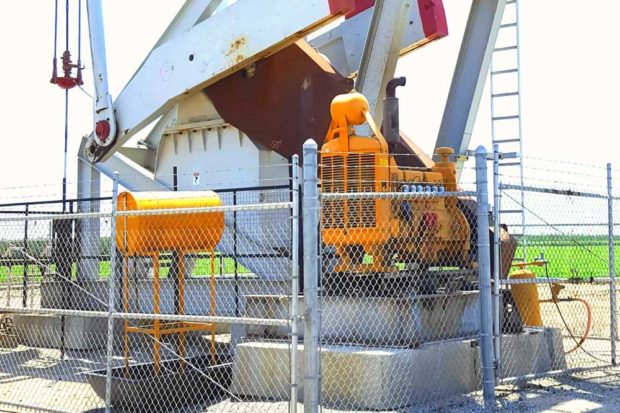
By Tom Frantz
The American Lung Association, in its annual State of the Air report, leaves no doubt that the southern end of the San Joaquin Valley has the worst fine particulate matter (PM2.5) pollution in the United States. PM2.5 levels, in the Association’s most 2017 report, were as much as 85% above the national health standard at Valley monitoring stations.
PM2.5 is a localized pollution problem. We produce it here in the Valley, and if you live close to a source, such as a neighbor’s wood-burning fireplace, you will suffer. Dust from agriculture, smoke from wood burning, diesel soot from trucks, exhaust from boilers and nitrates from factory dairy ammonia make up most of the inventory.
Dangerous levels develop when high atmospheric pressure puts a lid over the Valley for several days in a row. This is common during our winter months. Harvest time is the next worst period when dust blown from almond pickup machines permeates the already heavy fall air. If you live near a highway, diesel soot is a pervasive problem every day of the year and equally dangerous is living near an oil field or a dairy.
The average life expectancy in the southern Valley is around four years less than the state average for both men and women. People living near pollution sources and those, such as farmworkers who are outside all day, have the lowest life expectancies.
In the scientific literature, there is a growing body of evidence relating PM2.5 pollution to premature death. Studies show that it exacerbates several serious diseases where the San Joaquin Valley is an unfortunate leader.
Coronary heart disease is 40% above the state average in parts of the Valley. A 2015 study titled Air Particulate Matter and Cardiovascular Disease by Yixing Du explains why. Du examined the huge body of science that has shown the direct effects of PM2.5 on the body’s major organs as these particles invade the bloodstream.
Respiratory diseases occur locally as much as 60% above average. After 20 years of epidemiological studies, scientists have revealed a significant correlation between fine particle pollutants and death from respiratory disease. A recent example from 2016 is a study by Yu-Fei Xing simply titled The Impact of PM2.5 on the Human Respiratory System.
Diabetes also plagues parts of the Valley. In fact, Kern County has the highest death rate in the state from diabetes and is 60% above the state average. Pearson, in a study titled Association between Fine Particulate Matter and Diabetes Prevalence in the U.S., described how PM2.5 likely makes this disease worse.
The science of air pollution does not stop with the three killers mentioned above. Qiao Lee published a study this year titled Effects of Ambient Fine Particles PM2.5 on Human Skin Cells. The study shows how exposure to PM2.5 can lead to worse dermatitis and eczema.
And, have you ever wondered why infant mortality rates in the Valley are well above the state average? Woodruff in Fine Particulate Matter (PM2.5) Air Pollution and Selected Causes of Postneonatal Infant Mortality in California demonstrates how this is likely related to our bad air.
Michelle Wilhelm in 2010 tied together evidence in Los Angeles showing how exposure to ammonium nitrate particles, which are more than half of our PM2.5 on bad days, can lead to preterm birth.
Then there is C.R. Jung, who discovered recently a probable relation between Alzheimer’s disease and PM2.5. That study was called Ozone, Particulate Matter, and Newly Diagnosed Alzheimer’s Disease.
Scarily, fibrosis of the liver was linked to PM2.5 in 2015 by Zheng X in Exposure to Fine Airborne Particulate Matters Induces Hepatic Fibrosis in Murine Models.
Studies are also coming that demonstrate how ultrafine particles in our air can invade the body’s cells and cause genetic damage that gets passed to offspring.
In conclusion, a wealth of scientific evidence over the past 20 years demonstrates the dangers of PM2.5 and its effects on disease and premature death. The health benefits of clearing our air and meeting the national health standards are significant and far exceed the cost of the cleanup.
Our air district is supposed to have an enhanced cleanup plan for PM2.5 by the fall of 2017. The public must demand the strongest plan possible and not let the air district pass the responsibility for cleaning our air to the currently compromised Environmental Protection Agency. We obviously have to get the job done ourselves, and there should be no delays.
*****
Longtime clean air advocate Tom Frantz is a retired math teacher and Kern County almond farmer. A founding member of the Central Valley Air Quality Coalition (CVAQ), he serves on its steering committee and as president of the Association of Irritated Residents. The CVAQ is a partnership of more than 70 community, medical, public health, environmental and environmental justice organizations representing thousands of residents in the San Joaquin Valley unified in their commitment to improving the health of Californians. For more information, visit www.calcleanair.org.
